Ciabatta is one of my favourites bread. ITs lightness, slight yeasty smell, fluffy and full of air bubbles it’s merely a delight enjoyed on its own or as a companion to many other dishes. The following recipe is a step by step tutorial for baking two regular size ciabattas.
Ingredients:
Poolish :
330 g bread flour ( minimum 11% protein content )330g filtered water at 21 deg COne pinch ( 1g) instant yeast
The poolish is a preferment that will eventually be mixed in the final dough and it is best prepared 24 hours ahead of the baking time. Mix the equal parts of flour and water together with the yeast and the result will be a paste-like dough. Cover this dough with a plastic bag or something similar and set aside for a full day without disturbing. At the end of this, you will notice a jelly-like consistency with an impressive wobble factor and a pleasant smell.
Dough:
613g of bread flour405g of filtered water at 35-37 deg C2.6 g of instant yeast18 g sea saltall the poolish from above
The next morning when the poolish is ready, measure your ingredients (essential that your quantities are exact). Set the water in a recipient with a spout and pour gently 3/4 of its volume in the poolish container on the side walls. This will assist with the easy release of the poolish from the container. Now, pour the poolish and water mix into the dough mixer container ( I used a KitchenAid with a dough hook ). Add the flour and yeast over that, place in the mixer and start mixing on low speed for a couple of minutes until the content is incorporated. Follow that with an increase in medium speed and adding of the salt. Once the dough starts to come together use your remaining water and slowly add it in allowing it to incorporate gradually. This may take 5 minutes or so and the end result will be a paste-like dough. I know what you are thinking, this will never come together, but be patience and increase the speed of the mixing to high and you will notice that about 5 or so minutes later your dough will start making this slapping noise and slowly come together forming a ball around the dough hook and coming clean off the walls of the container. At this point, you can stop and remove the dough. Place it in a 6 L or larger plastic container ( rectangular in shape) which you’ve lightly oiled with a little olive oil. Cover and let rest for 45 minutes at room temperature. After the first rest remove the lid and fold the dough four times. Rest again for 45 minutes and repeat the folding 3 more times. Each time you will notice the change in the consistency and feel.
Your oven should be preheated by now to 230deg C. Prepare your baking tray and line it up with baking paper.
On a well-floured board remove the dough from the plastic container. Start with a dough scraper and release the dough from the 4 sides of the container and then turn on one move the container upside down on top of the well-floured surface you’ve prepared earlier. You will see that the dough will naturally fall out and maintain its shape. The idea is to disturb the dough as least as possible and preserve lightness and gas bubbles contained within. Once on the floured board, fold gently in half and flour the top generously. Shape gently into the width of about two loaves and with a dough cutter or knife cut into equal pieces across the length. Gently place each bread next to each other but not touching on the baking paper. Cover with a towel and let rest for 20 minutes or so.
Now place in the oven and bake for 20-25 minutes. Remove, allow to rest until cooled and enjoy your ciabatta bread.






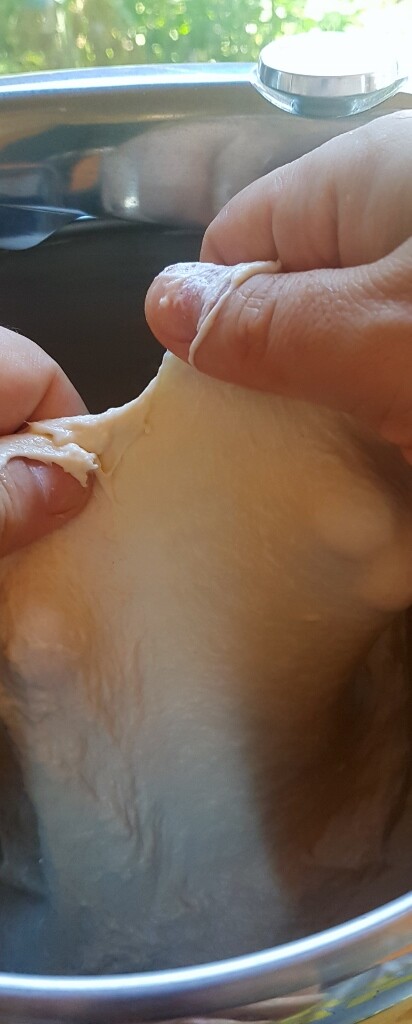

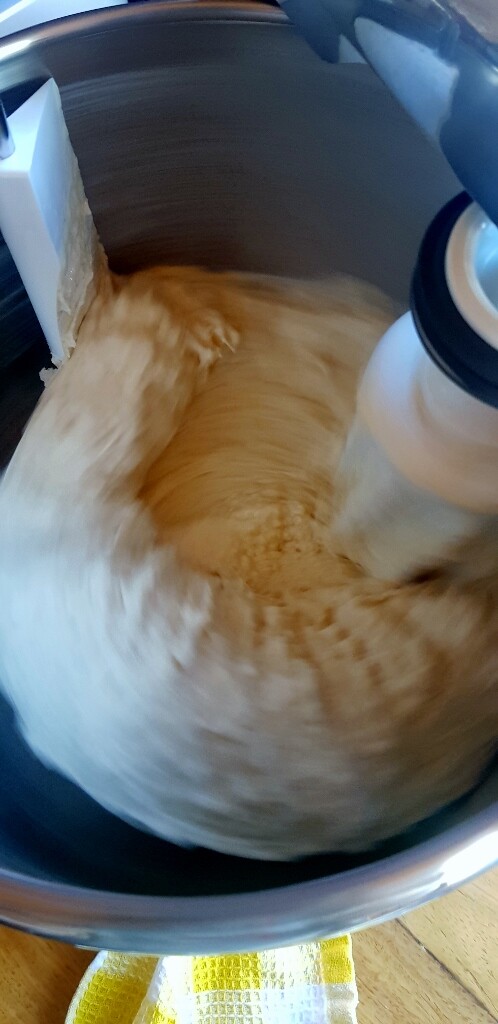

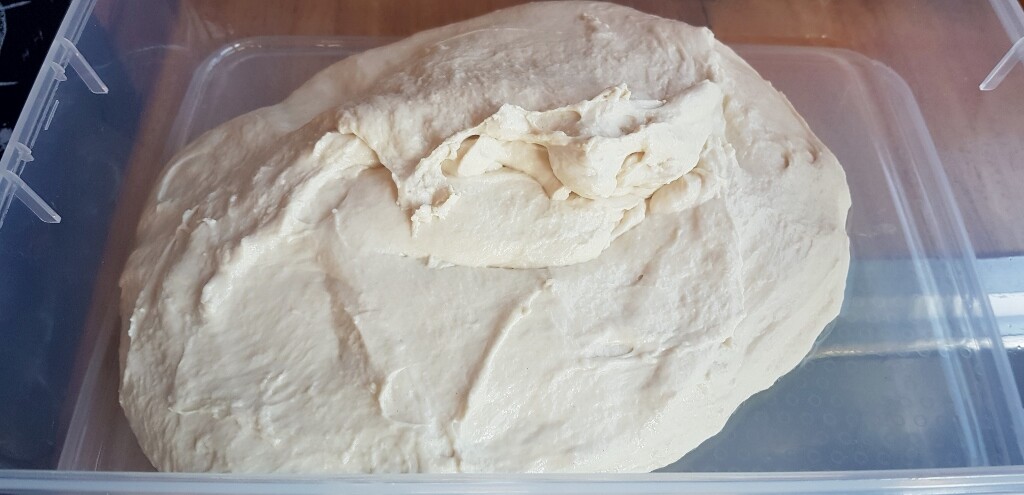
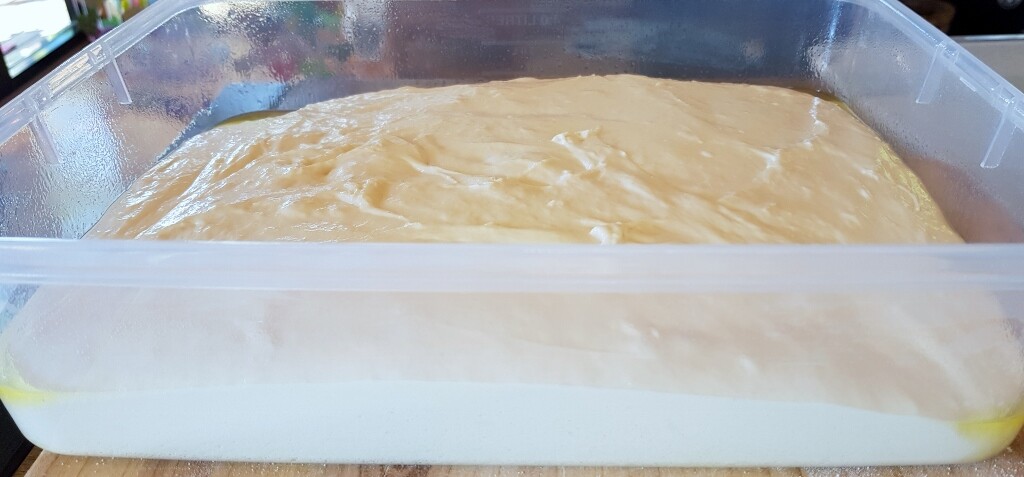
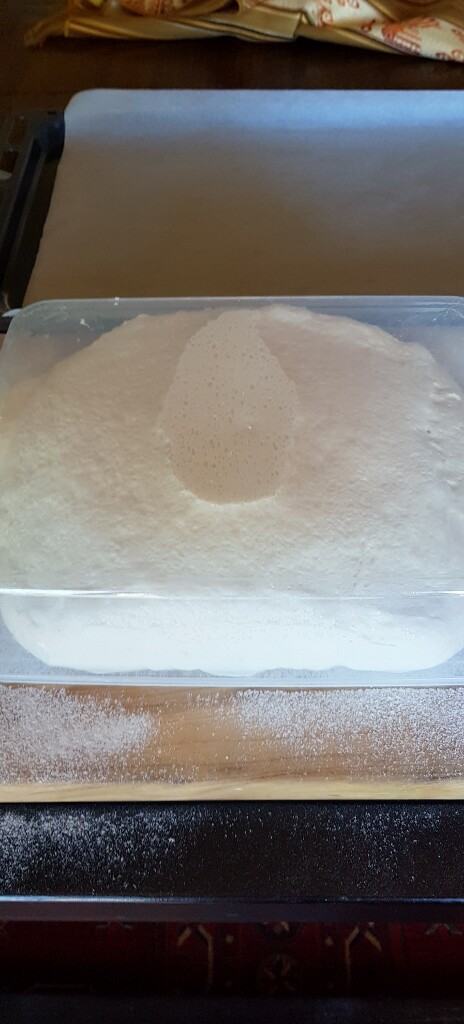



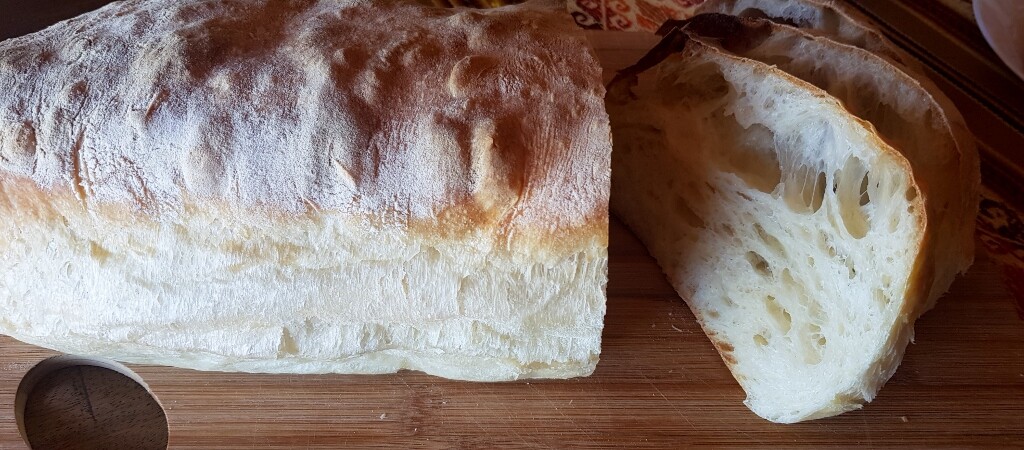

Leave A Comment
You must be logged in to post a comment.